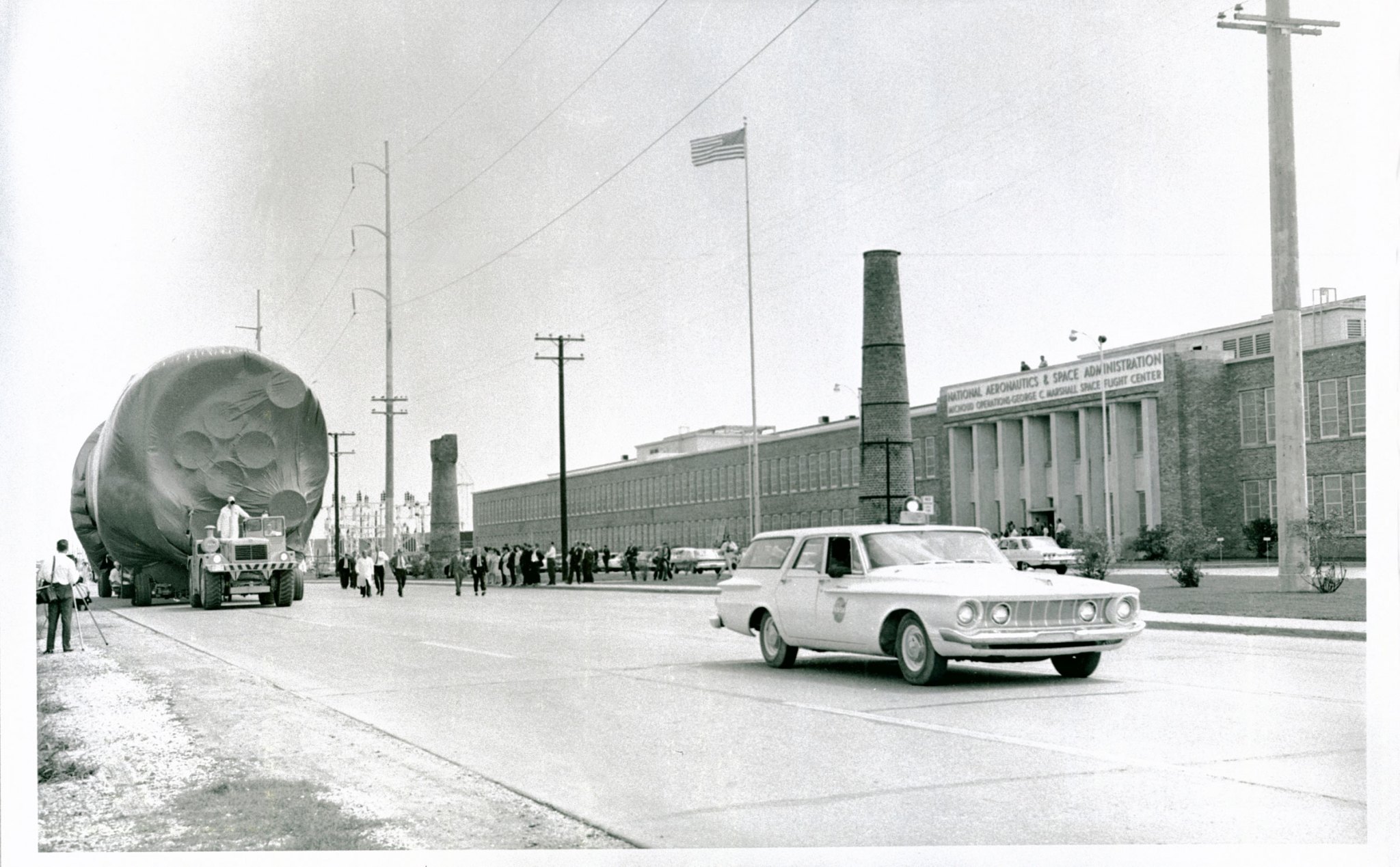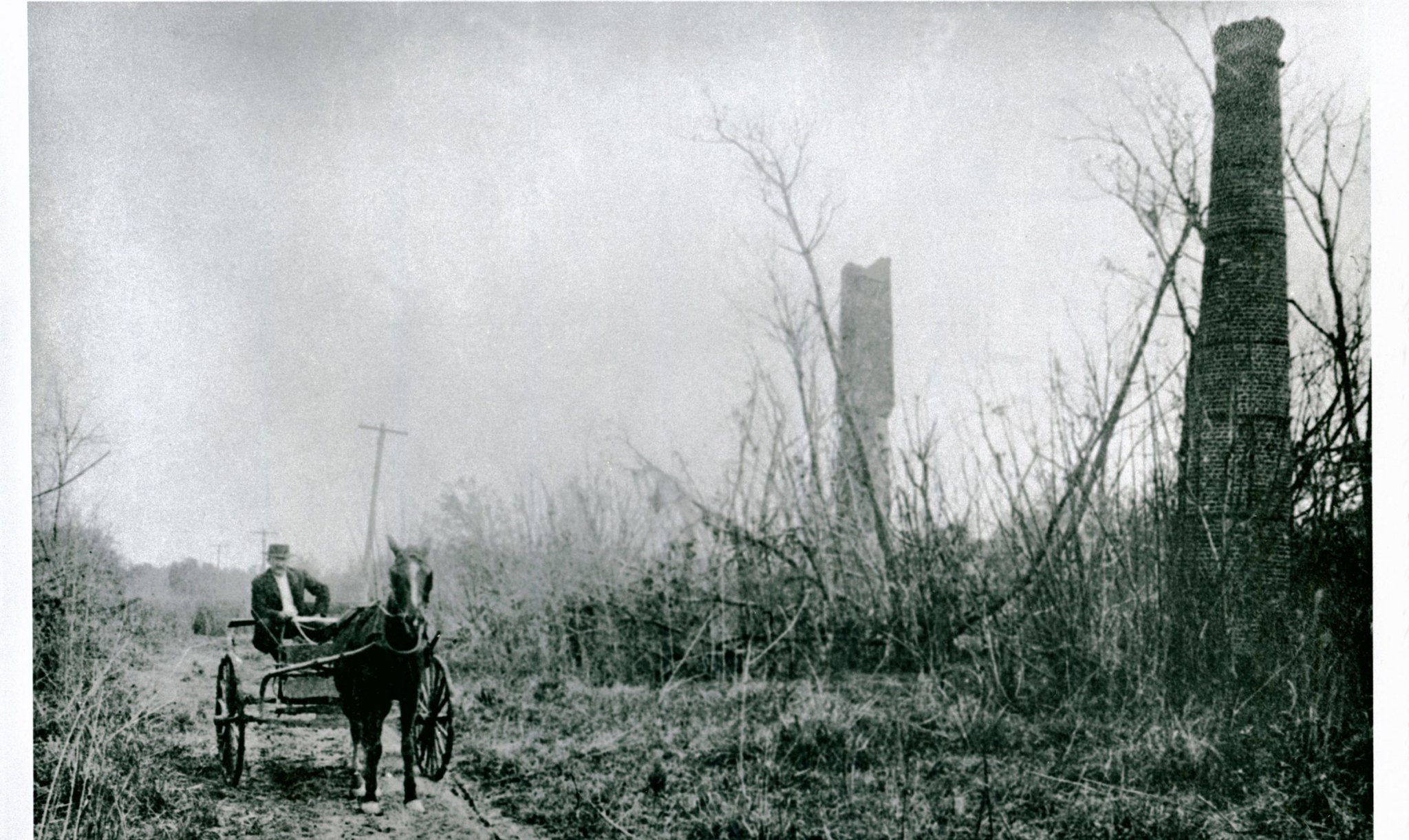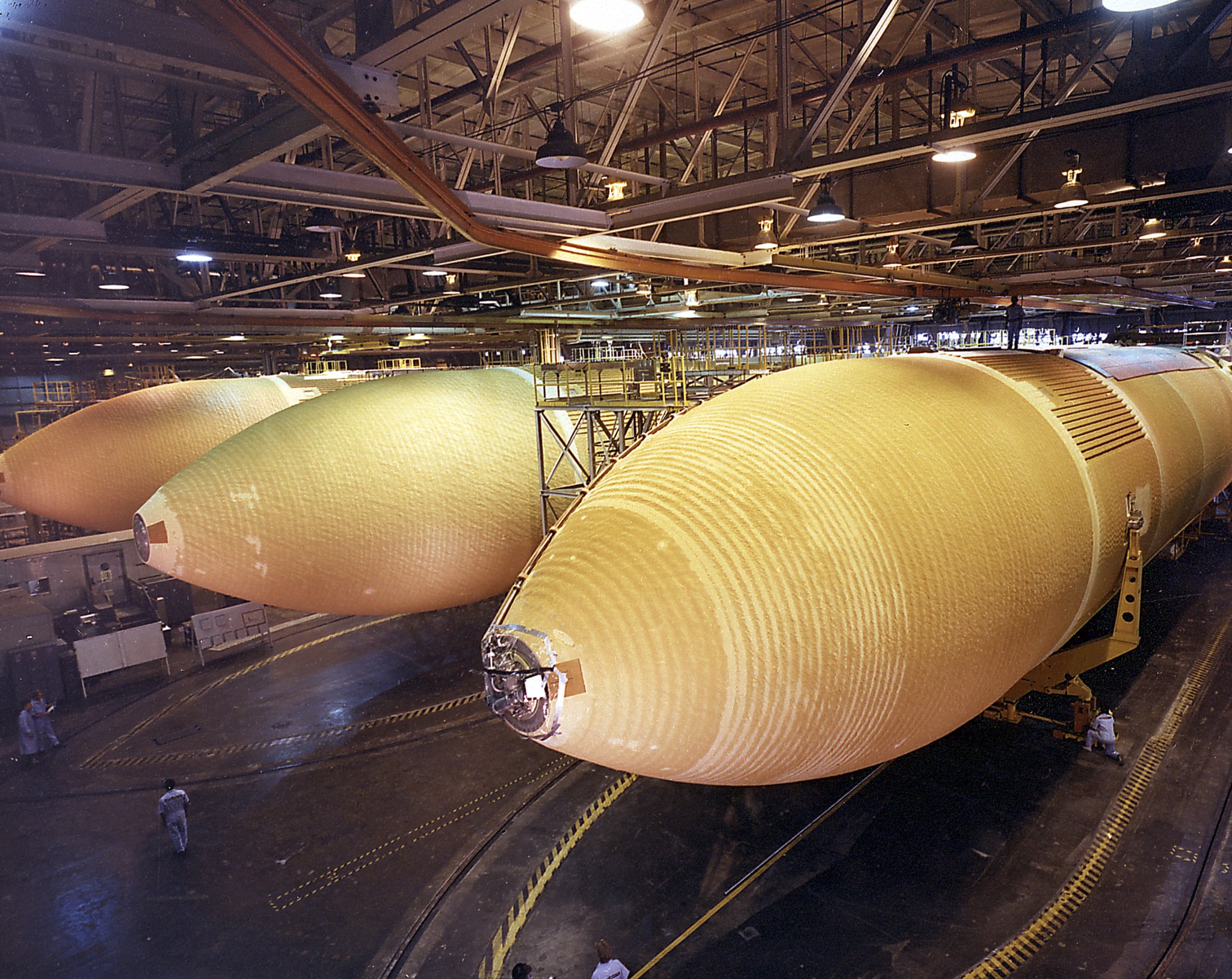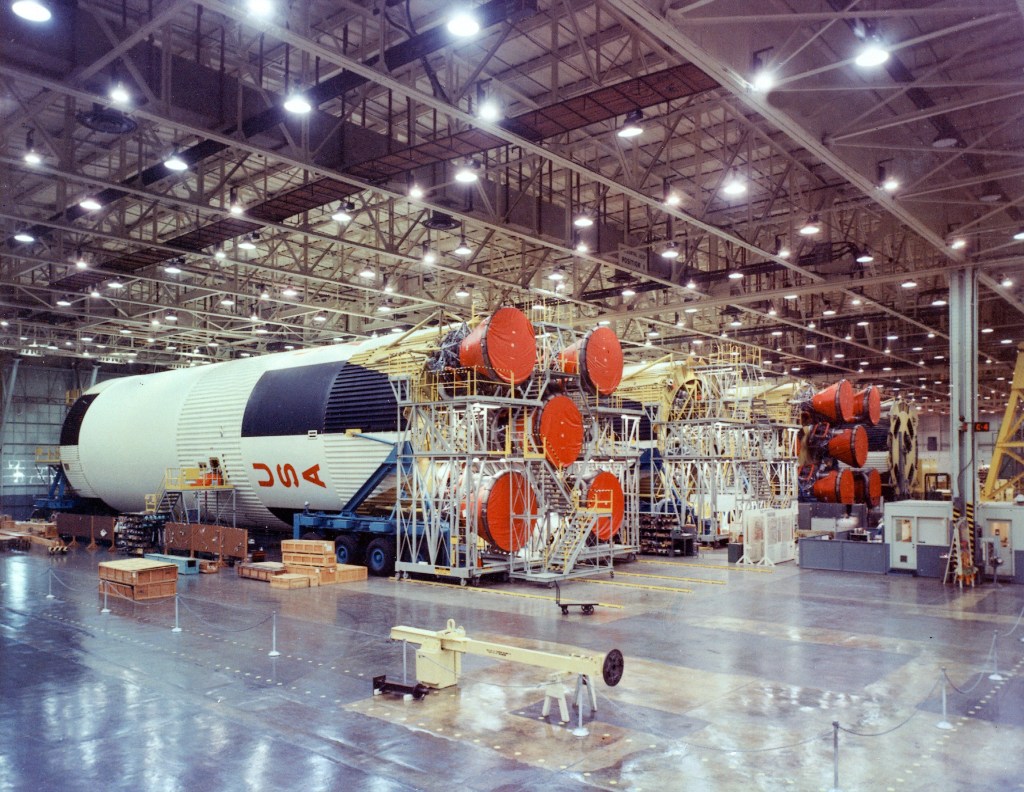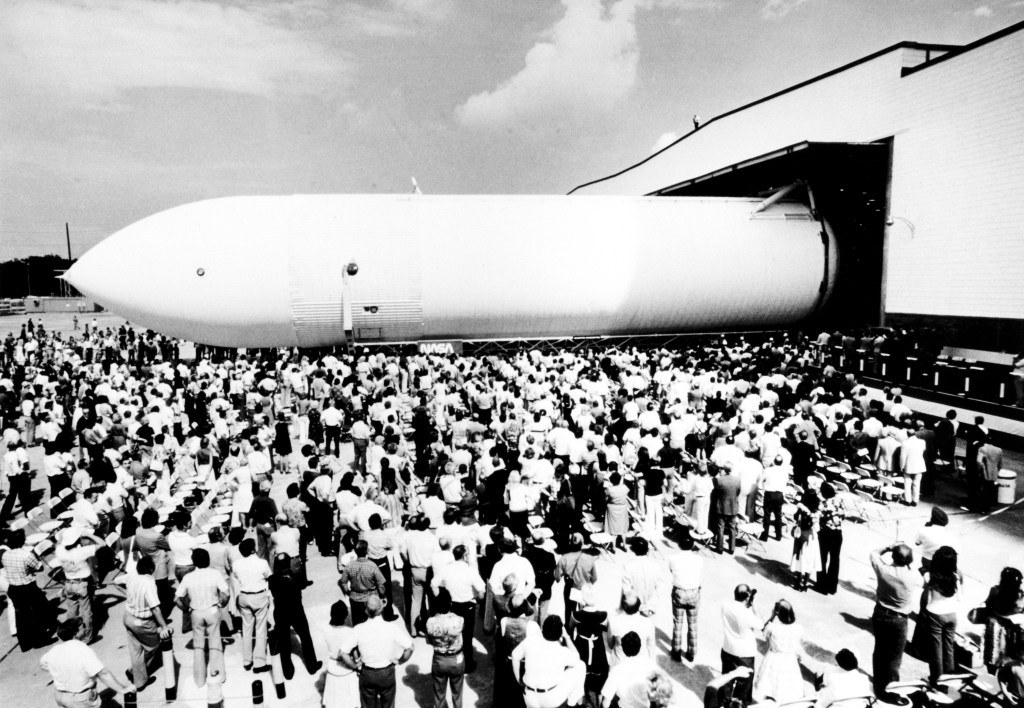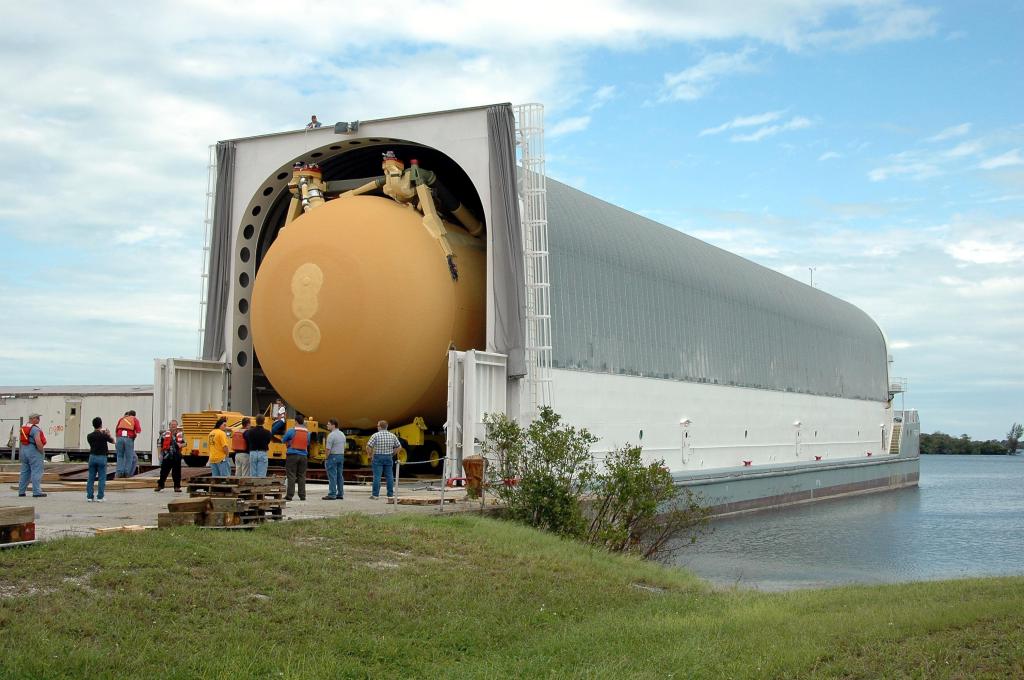The original tract of land was part of a 34,500 acre French Royal land grant to local merchant, Gilbert Antoine de St. Maxent in 1763. Later, the land was acquired by French transplant Antoine Michoud, the son of Napoleon’s Administrator of Domains, who moved to the city in 1827.
Michoud operated a sugar cane plantation and refinery on the site until his death in 1863. His heirs continued operating the refinery and kept the original St. Maxent estate intact into the 20th century. Two brick smokestacks from the original refinery still stand before the Michoud facility today
The U.S. government purchased the land in 1940 and built a production facility to manufacture cargo aircraft, tank engines and more. NASA acquired the facility in 1961.
With the space race with the Russians heating up, the National Aeronautics & Space Administration took over the facility (Then called the Michoud Ordinance Plant) for design & assembly of large space vehicles. The plant was assigned to Chrysler and Boeing to set up production for the first stages of Saturn I and Saturn V. NASA manufactured the first stage of the Saturn I and the first stage of the Saturn V vehicles there, but there was not room to also manufacture the second stage of the Saturn V in this plant. Water access played a role in all site selections for new Apollo facilities.
In 1965, the MSFC Michoud Operations name officially changed to Michoud Assembly Facility. Construction of the Saturn S1B and S1C boosters continued at the Michoud facility until the early 1970s.
Michoud Assembly Facility worked on the External Tank for the Space Shuttle Program from the 1980s through 2000s.
Situated on 829 acres of land, the Michoud Assembly Facility features more than 2 million square feet of manufacturing space, and more than 300 acres of green space for expansion. The site includes numerous open, high-bay areas, an extensive overhead crane network and the 45,000-square-foot Vertical Assembly Center, the world’s largest robotic tool for building rockets, for the integration and stacking of large-scale structures. Its list of state-of-the-art manufacturing capabilities includes friction stir welding, non-destructive evaluation, high-gantry machining centers, 40,000-square-foot machine shop, build to print part/component fabrication, component processing facility and much more.
The facility also has interstate highway access, and a port on the Intracoastal Waterway connecting Michoud to the Mississippi River and Gulf of Mexico for transportation of manufactured space hardware. NASA’s barge Pegasus, maintained at Michoud, has been modified to transport large SLS elements such as the core stage—the largest piece of hardware NASA has ever moved by barge.
Having previously served both the Apollo and Space Shuttle programs, the facility has adapted to support all NASA’s human space flight missions. Today, Michoud is manufacturing and assembling the core stages for NASA’s Space Launch System (SLS) – the world’s most powerful rocket that will send the Orion spacecraft, astronauts, and supplies on bold explorations to the moon and beyond, the Orion spacecraft’s pressure vessel and launch abort system, and preparing to begin production on SLS’s block 1B configuration Exploration Upper Stage.
History of Michoud
Explore the Universe from your Inbox
Subscribe to the NASA newsletter
We will never share your email address.


























